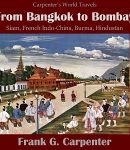
From Bangkok to Bombay (Siam, French Indo-China, Burma and Hindustan)
Another entry in Carpenter’s geographical reader series with information on the peoples, cultures, and everyday life of this Asian area. – Summary by BettyB [chương_files]

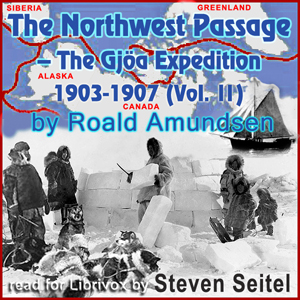
















Another entry in Carpenter’s geographical reader series with information on the peoples, cultures, and everyday life of this Asian area. – Summary by BettyB [chương_files]

Exeter, county town of Devon, is one of England’s most historic cities with remains of the Roman occupation and medieval times still on view. Exeter cathedral, founded in 1050 and completed 400 years later, has the longest uninterrupted vaulted ceiling in the country. This short book in Blackie & Sons’ Beautiful England series details the history of the city and it many sites of interest, with chapters on the city, the cathedral and the River Exe. Readers who can access the printed version of the book on Internet Archive, may enjoy looking at E. W Haslehursts’ 12 colour illustrations while listening to this audiobook. – Summary by Phil Benson [chương_files]
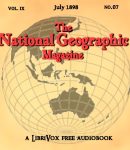
The National Geographic Magazine, an illustrated monthly, Vol IX, July 1898, the N.E.A. Number. It includes the following articles: American Geographic Education, by W J McGee Origin of the Physical Features of the United States, by G. K. Gilbert Geographic Development of the District of Columbia, by W J McGee The Historical Development of the National Capital, by Marcus Baker Geographic Work of the General Government, by Henry Gannett The Geologic Atlas of the United States, by W J McGee The Topographic Atlas of the United States, by W J McGee [chương_files]
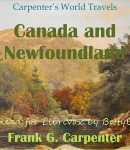
Another entry in Carpenter’s series of World Travels focusing on Canada and Newfoundland. (Summary by Betty B) [chương_files]
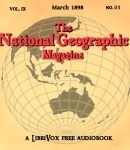
The National Geographic Magazine, an illustrated monthly, Vol IX, the March Number. It includes the following articles: Dwellings of the Saga-time in Iceland, Greenland, and Vineland, by Cornelia Horsford Completion of the La Boca Dock Two Hundred Miles up the Kuskokwim, by Charles Hallock The Mt St Elias Expedition of Prince Luigi Amadeo of Savoy, by Eliza Ruhamah Scidmore The Origin of the French Canadians The Height of Mt Rainier, by Richard U. Goode Geographic Work by the Bureau of American Ethnology, by W. J. McGee A Relic of the Lewis and Clarke Expedition, by Cyrus C. Babb An Interesting Rumor Concerning Andree, by John Hyde Geographic Names in West Greenland, by Ralph S. Tarr [chương_files]
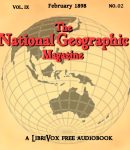
The National Geographic Magazine, an illustrated monthly, Vol IX, the February Number. It includes the following articles: Gardiner Greene Hubbard, by Rev. Teunis S. Hamlin, D. D. Gardiner Greene Hubbard, Memorial Meeting Geographic Literature Miscellanea [chương_files]

Mountains have always been fascinating as places of special adventure. This book. first published in 1869, collects true stories of real-life adventurers climbing the world’s most famous and most challenging mountains, without modern equipment to support them. Read here about the fate of these adventurers, their successes and failures, challenges and – Summary by Carolin [chương_files]
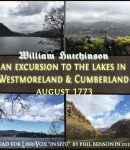
In the summer of 1773, lawyer and antiquarian William Hutchinson set out from his home in County Durham on a tour of the English Lake District. Accompanied by his brother, George Allan, he travelled by horseback from Bowes to Penrith and Keswick, down through Grasmere and Ambleside to Kendal, and back via Kirkby Stephen to County Durham. When he returned home he wrote what may be the first guidebook to the Lakes. Written in a pre-Romantic era when English writers were just beginning to discover the delights of the scenic view, Hutchinson’s account vividly describes a district that would soon be the haunt of literary giants such as Wordsworth, Southey, Matthew Arnold and Harriett Martineau. These recordings were made ‘on site’ as I followed in Hutchinson’s footsteps during the cold and wet early spring of 2018. – Summary by Phil Benson [chương_files]

In an age when women were expected to remain at home, entertain, and rear children, Rosita Forbes elected “to boldly go where no one had gone before…” Like her older contemporary, Gertrude Bell (who was focused more in the Persian and Iraqi areas), Forbes held a profound love of the vast desert and the people who lived there. That love shines out in this engaging travelogue of her November 1920 – February 1921 adventure. The expedition took her deep into the Libyan desert to seek a remote location, revered by local peoples, that was protected from outside intrusion. Forbes was the first European woman, and only the second outsider, to reach Kufara, amid trials of difficult travel, complications with camels, differing priorities of personnel, political intrigue, outright betrayal, climate hardships, and near-disastrous wanderings off the route when water was short or gone. Her sharing of the surroundings, situations, and cultural nuances makes the reader feel as if you were right there with her, shading your eyes as you await the capture of the sunrise or sunset mirage that will show the distant features you hope to locate. Join her entourage and travel along through the Libyan sands as she shares this historic journey of more than a thousand miles. ( summary by LCaulkins) [chương_files]
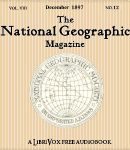
The National Geographic Magazine, an illustrated monthly, Vol VIII, the December Number. It includes the following articles: A Special Announcement, by F. H. Newell, Secretary The Washington Aqueduct and Cabin John Bridge, by D. D. Gaillard Gardiner Greene Hubbard, by John Hyde Pollution of the Potomac River, by F. H. Newell The Delta of the Mississippi River, by E. L. Corthell The Annexation Fever, by Henry Gannett Sir John Evans and Prof. W. J. McGee, by John Hyde Some Recent Geographic Events, by John Hyde Geographic Literature, by Henry Gannett Geographic Notes [chương_files]
Copyright © 2024 | FreeAudible